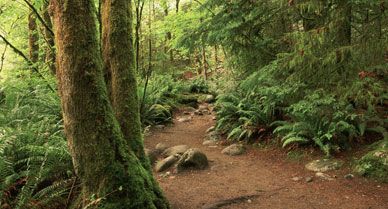EcoCenter: The Land
A look at man-made and natural causes that are threatening the Earth
Smithsonian.com
/https://tf-cmsv2-smithsonianmag-media.s3.amazonaws.com/filer/ecocenter-land-631-new.jpg)
We are excited to present a special editorial section about The Land. Please visit www.smithsonian.com/ecocenter for the full feature.
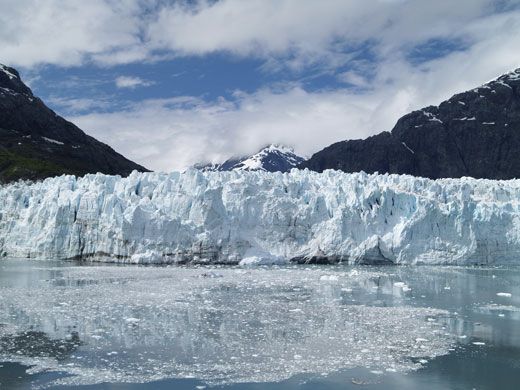
The dramatic tidewater glaciers that define this 3.2-million-acre park are remnants of the Little Ice Age that began about 4,000 years ago. With 16 active glaciers, Glacier Bay is the park's main attraction. As recently as 200 years ago the bay was almost completely covered by a glacier more than 4,000 feet thick and some 20 miles wide. But as it retreated over the years, it left behind smaller, separate glaciers. iStockphoto
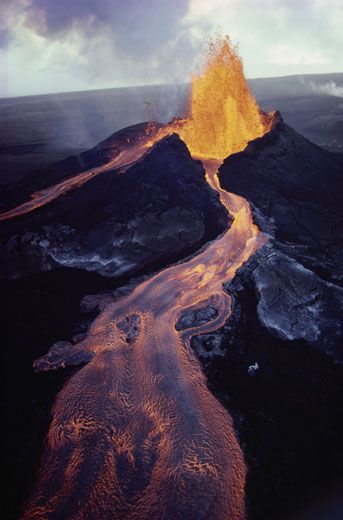
From lush rain forests to tropical beaches and snow-covered peaks, Hawai'i Volcanoes National Park protects seven different ecological zones and houses the world's most active volcanoes, Kilauea and Mauna Loa. The more active of the two, Kilauea, has created more than 568 acres of new land and buried almost nine miles of highway with lava as deep as 115 feet. Jim Sugar/Corbis

Perhaps the most iconic park in the U.S., Yellowstone National Park is famous for having the greatest concentration of geothermal features in the world. Geysers, steaming fumaroles, multi-colored hot springs and boiling mud pots make up the 10,000 known thermal spots in the park. Old Faithful is one of the most popular, regularly shooting 8,400 gallons of scalding water into the air every 33 to 120 minutes. Congress officially protected the Yellowstone area in 1872, making it the first American park and the only preserve of its kind in the world. iStockphoto
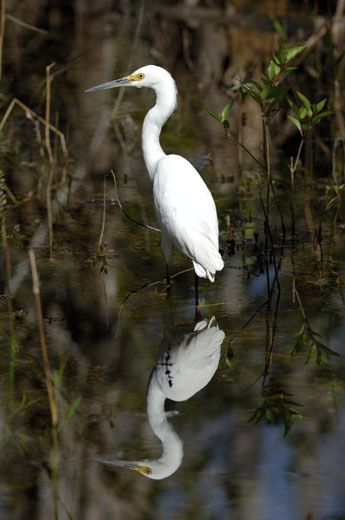
Located in the biologically diverse Florida Everglades, Big Cypress National Preserve protects more than 720,000 acres of swamp and provides habitat for many mammals, birds, reptiles and plants unique to Florida's climate. It's also home to eight federally listed endangered species that include the Cape Sable seaside sparrow, the West Indian manatee and the Florida panther. The Florida panther is the most threatened mammal in the U.S., and almost 40 of them live within the preserve's boundaries. iStockphoto
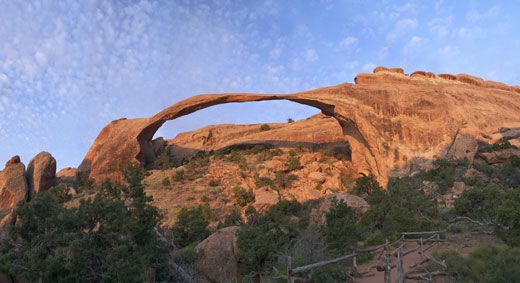
Arches National Park in the desert of eastern Utah boasts more than 2,000 natural sandstone arches formed by wind and water erosion over millions of years. The red sandstone arches range in size from a three-foot opening to Landscape Arch, which measures 306 feet from base to base and is the longest freestanding natural span of rock in the world. Towering spires, fins and balanced rocks are also hallmarks of the park and some of the most unique formations can be seen at popular sites such as Balanced Rock, Courthouse Towers, Delicate Arch, and Fiery Furnace. iStockphoto
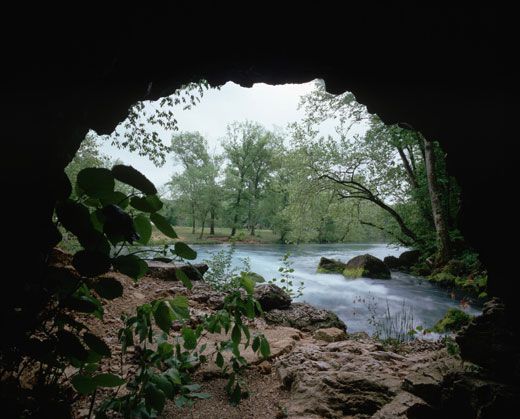
The Ozark National Scenic Riverways is world famous for more than 300 known caves. The park's landscape is typified by karst terrain—rocky ground, springs, caves, sinkholes and underground rivers. Jam Up Cave is one of the Ozark's most spectacular, and it's only accessible by boat. The entrance is about 80 feet high and 100 feet wide. During the Civil War, Northern and Southern soldiers received medical care in Hospital Cave, located in a bare-rock cliff, while farmers in the surrounding area are also thought to have used Meeting House Cave as a hideout. David Muench/Corbis
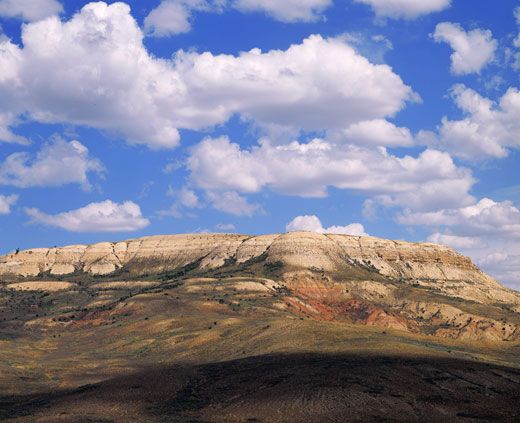
Located in southwestern Wyoming's cold sagebrush desert, Fossil Butte National Monument contains 13 square miles of Fossil Lake. This 50-million-year-old lake bed dates back to the Eocene age and is one of the richest fossil sites in the world. It contains some of the most perfectly preserved remains of ancient fish, reptile, bird, mammal, plant and insect life. A combination of quiet, deep waters and fine-grained lake sediments created conditions that kept the skeletons intact. David Muench/Corbis
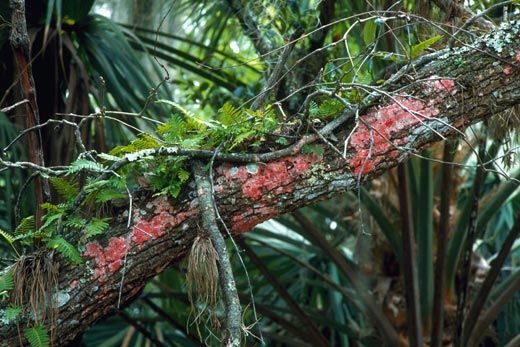
Habitat: Deserts of Mexico and the southwestern United States
Strange Factor: During frequent droughts, it folds up its stems into a tight ball and goes into a state of dormancy that can last for years. When the rains return, the plant's cells rehydrate, its metabolism increases and the stems unfold. Hal Horwitz/Corbis
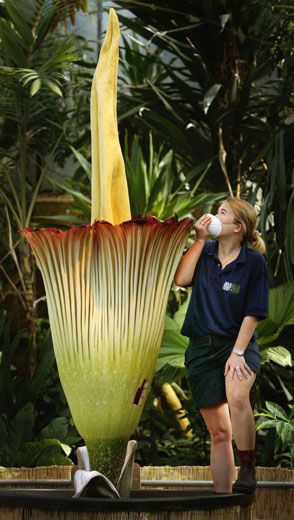
Habitat: Equatorial rain forests of Sumatra, Indonesia
Strange Factor: The flowers only bloom about three or four times during their 40-year lifespan, releasing a horrible stench that's been compared to the odor of rotting meat. Reuters/Corbis
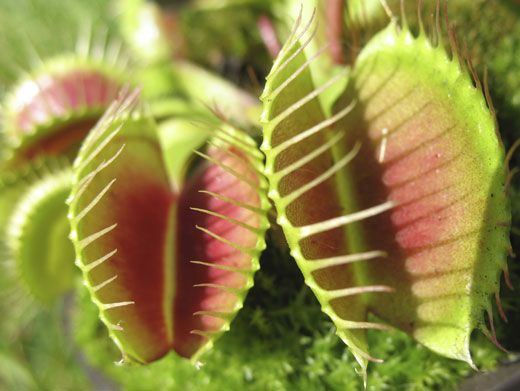
Habitat: Nitrogen-poor environments, like bogs, in the Carolinas and northern Florida
Strange Factor: This carnivorous plant catches and digests insects and arachnids when two trigger hairs, called trichomes, on the leaves are touched in succession, or when one hair is touched twice. The two lobes of the leaves then snap shut, usually in less than a second. The plant secretes enzymes that digest the prey over ten days, after which the leaf reopens to prepare for another meal. iStockphoto
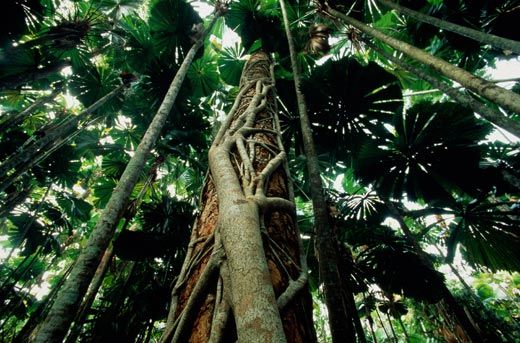
Habitat: Tropical climates of southern Florida
Strange Factor: The strangler fig is vine-like and grows up a host tree, eventually strangling it and becoming a self-supporting, independent tree. The fig grows to massive size, averaging about 60 feet tall by 60 feet wide. Frank Krahmer/zefa/Corbis
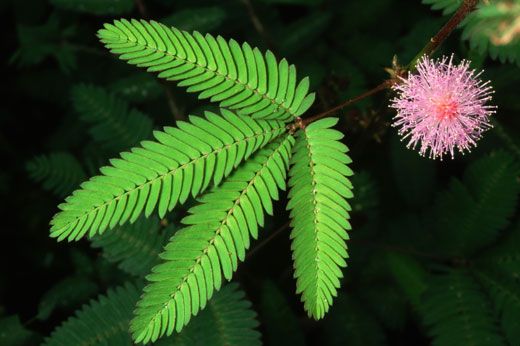
Habitat: Brazil
Strange Factor: Growing up to 18 inches, the plant is known for its movements. When the leaves are touched, they will droop downwards temporarily. The same thing occurs when the plant is shaken or deprived of water. Reacting to the absence of light, the leaflets fold together at night and droop downward until sunrise. Kevin Schafer/Corbis
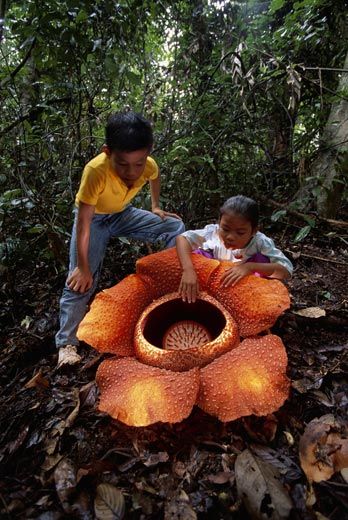
Habitat: Rain forests of Indonesia
Strange Factor: The meat flower has the world's largest bloom; it can grow up to three feet across and weigh up to 15 pounds. This is a parasitic plant that attaches itself to a host plant for nutrients. Like the corpse flower, the plant emits a smell similar to rotting meat when in bloom to attract insects that will pollinate it. Frans Lanting/Corbis
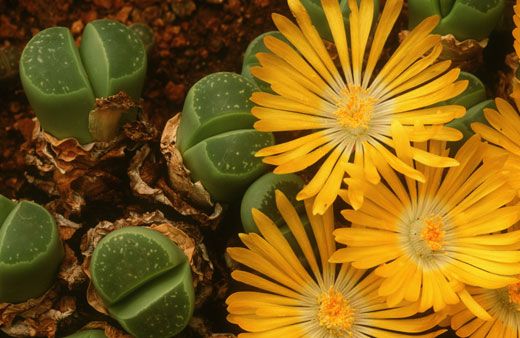
Habitat: Africa, mainly Namibia and South Africa
Strange Factor: During frequent periods of drought, the plants' thick leaves go below the soil level using contractile roots. The plant gets its name from its strange physical resemblance to stones. Martin Harvey/Corbis
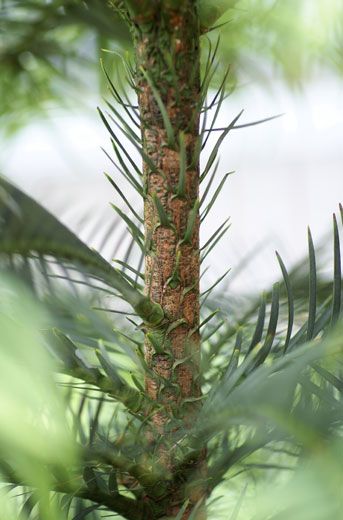
Habitat: Wollemi National Park, 125 miles west of Sydney, Australia
Strange Factor: Prior to its 1994 discovery, the Wollemi pine was presumed to be extinct, only known to botanists through 90 million-year-old fossils. The conifer, or cone-bearing seed plant, can grow up to 112 feet tall and has dark green foliage and a bubbly bark. The pine is critically endangered—fewer than 100 mature trees currently live in Wollemi National Park. iStockphoto
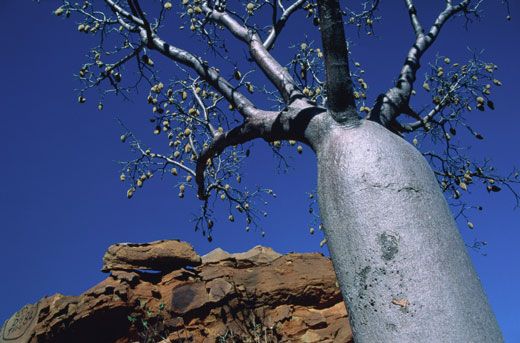
Habitat: From sub-Sahara Africa to South Africa
Strange Factor: The bottle tree is not particularly tall, only reaching about 70 feet. But the tree's name comes from its colossal trunk, which can grow 35 feet in diameter and resembles the shape of a bottle. The trunk—or trunks, as many old trees have more than one—is used to store water during dry periods and can hold more than 1,000 gallons. Frank Krahmer/zefa/Corbis
Get the latest Science stories in your inbox.
